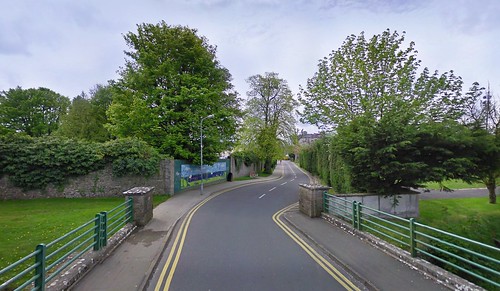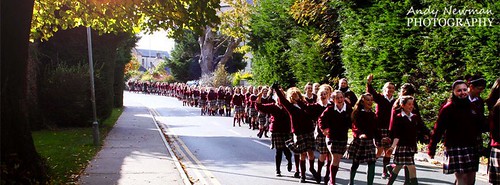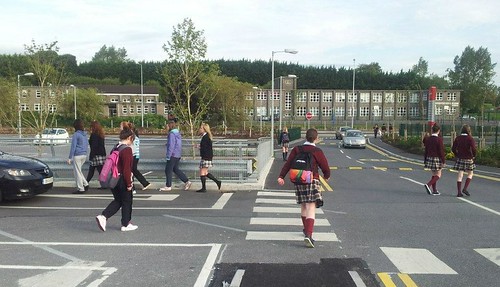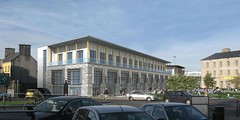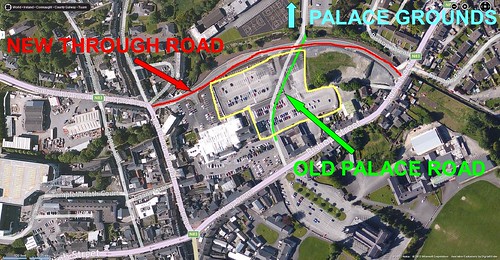When artists are rooted in place: a small-town musician fights for a piece of community history

Posted October 15, 2012 at 1:35PM
Ever since Joni Mitchell’s song, it’s become a cliché, right? “They paved paradise, put up a parking lot.” But clichés become embedded in our culture for a reason. And thus begins the story of a small-town musician’s concern for his community.
Sometimes the work of artists is so inextricably associated with place that you cannot imagine them without it. We wouldn’t have Faulkner without Mississippi, Thomas Wolfe without Asheville, or Woody Allen without New York, at least not as we have come to know them. Among musicians, how could we imagine Los Lobos without East LA, Springsteen without New Jersey, or anyone named Marsalis or Neville without New Orleans? Unlike the worldliness of, say, Bob Dylan or U2 or Madonna, some artists remain deeply rooted in geography throughout their creative careers.
And so it is with the mighty Saw Doctors, the wildly popular Irish roots-rock band whose every word and sound practically oozes “the twisting, turning, winding roads” of County Galway (and, to an extent, neighboring County Mayo), from whence they came and where they still call home. More specifically, the band’s two remaining founders, Leo Moran and Davy Carton, hail from the small (population 6,130) town of Tuam, about a half hour’s drive north on the road they made famous, the N17, from Galway City.
The ever-ebullient Moran is now leading a grassroots campaign to save (or, more precisely at this point, to restore) part of Tuam’s character. In a world where people such as myself write about broad urban concepts, usually anchored in large, well-known American cities such as Philadelphia, Miami, or Chicago, something that happens in a place like Tuam might not seem a big deal. Really, the protest is about roughly one city block in a small (though historic) community largely unknown to people outside of Ireland.
But, see, when you’re in a small town, things that seem little to others – including, in this case, the Galway County Council – aren’t really so little. When you’ve walked down a stretch of what seemed like a country-lane-in-town as a schoolkid and maybe you still did as recently as months ago, or your kids did, and that little bit of your history has been taken away to build, quite literally, a ginormous surface parking lot for a private business, it matters. Maybe the Palace Road wasn’t quite “paradise,” but it was yours.
The relatively short street ran from the center of town, just a couple of blocks from the N17, through some trees and by some classic stone walls up to the Palace Grounds, a public park that was once the site of the Bishop’s Palace. It was a pedestrian, cycling and vehicle link between the center of Tuam and its largest park. A businessman-turned-developer proposed a large, mixed-use development on the site of the street and the parcels on either side of it, with underground parking. In return for giving up that stretch of the Palace Road, the town would get a new, suburban-style through road running east-west and intended to relieve traffic on another thoroughfare to the south. And, more important, Tuam residents would get a "high quality large public open space," a department store, 55 commercial and retail spaces, 112 residences, a childcare facility, a restaurant, a hotel, and offices -- along with the jobs that came with them.
A lot of people in Tuam might have been willing to make that bargain at one point – the plans for the new development looked promising, and they were getting some return in exchange for their loss – but, in the actual event all they got was chopped-down trees, demolished stone walls, the removal of a bit of scenery and history, and . . . an ugly parking lot. The developer says he still intends to fully develop the site when economic conditions improve but, in hindsight, it now looks overly ambitious as conceived for the town, and quite unlikely to happen anytime soon, if ever.
The development decisions were made by the Galway County Council, with the Tuam Town Council apparently asleep at the wheel until earlier this month, when they unanimously stated their opposition to extinguishing the public right-of-way. Legally, the decision belongs to the county, not the town, but one wonders if the townspeople would have gotten a better hearing before the damag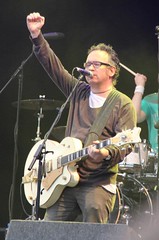 e was done if the local representatives had been more forceful and timely.
e was done if the local representatives had been more forceful and timely.
At this point, it would seem that Moran and his hardy band of protesters face bleak prospects. The County Council reaffirmed its decision last week. That’s not stopping him, though, or the 2,648 members of a Facebook group called Restore Our Palace Road (many of whom are quite active in the campaign). They want the public right-of-way restored along the former route of the road (and, one presumes, some mitigation for the lost trees and heritage). A clearly fed-up Moran posted last Friday on Facebook:
“People of Tuam! Bored? Have a few quid in the bank? Why not close off a public road and build a car-park for yourself? It's no problem. No-one will say anything to you. Well, maybe a few layabouts with nothing better to do might give out to you a bit but I wouldn't mind them.”
Stating his territory of origin loud and clear, Bruce Springsteen titled his first album Greetings from Asbury Park, NJ. The Saw Doctors titled their second All the Way from Tuam. It looks like they still mean it. The 90-second video just below features the (haunting, in a good way) music of a Saw Docs alum, Padraig Stevens, along with images of the old Palace Road as it was but no longer is. The second features Moran and Stevens leading a group of protesters standing and singing on the parking lot that replaced it.
Related posts:
- The importance of legacy to sustainability (November 28, 2011)
- Why we do this: a musical tribute to the Irish landscape (March 17, 2010)
- Small town changes: “I watched the growth – it’s become ‘Paradise Lost’ for me” (March 16, 2010)
- Ireland’s eco-village at Cloughjordan (March 17, 2009)
- The greening of Guinness (March 16, 2012)
- Exemplary smart, green development will complement the historic character of medieval Weilburg (October 28, 2009)
- Saving history from sprawl: threats to Civil War battlefields (December 4, 2008)
- Small-city smart growth: you can't go home again - or can you? (part 1) (January 14, 2008)
Move your cursor over the images for credit information.
